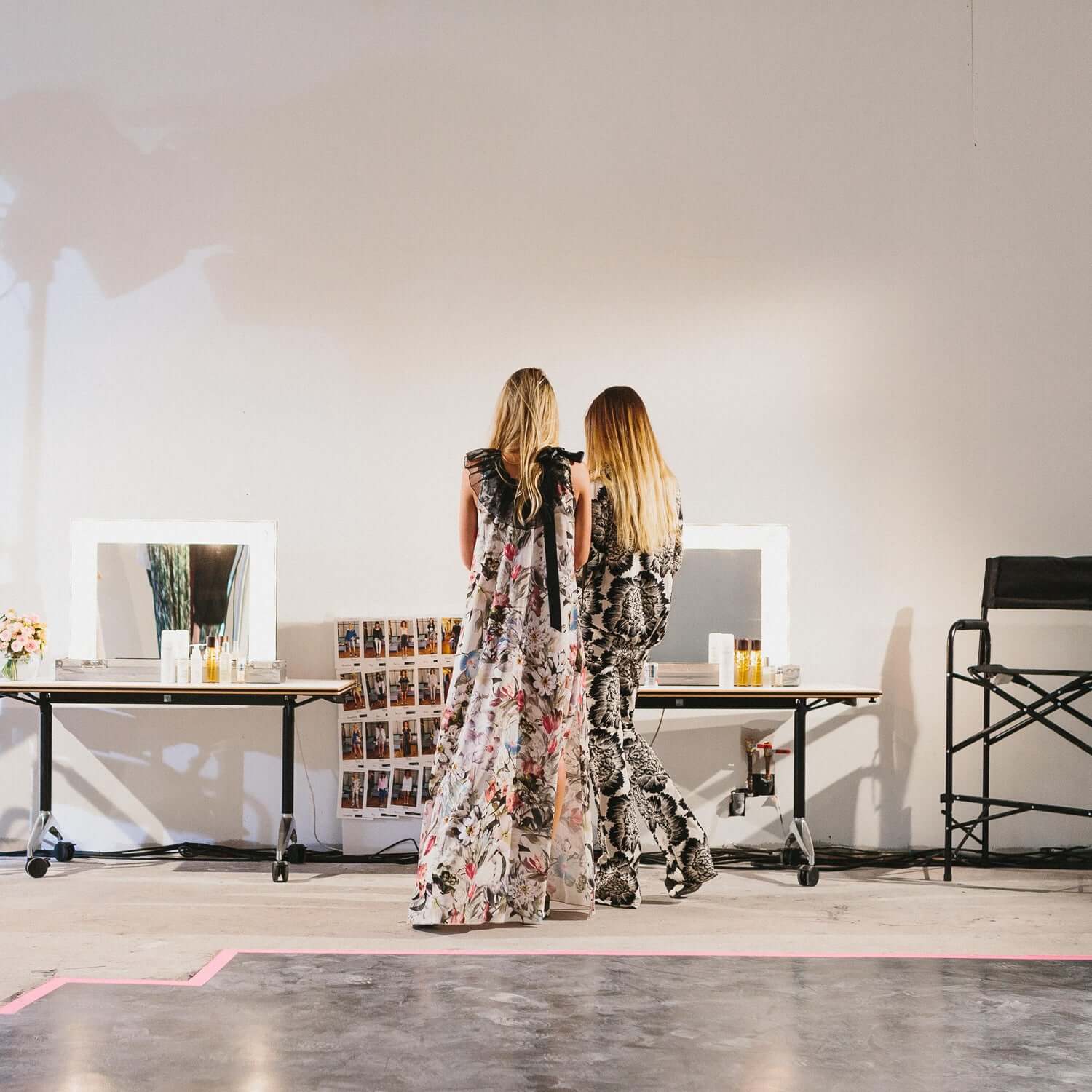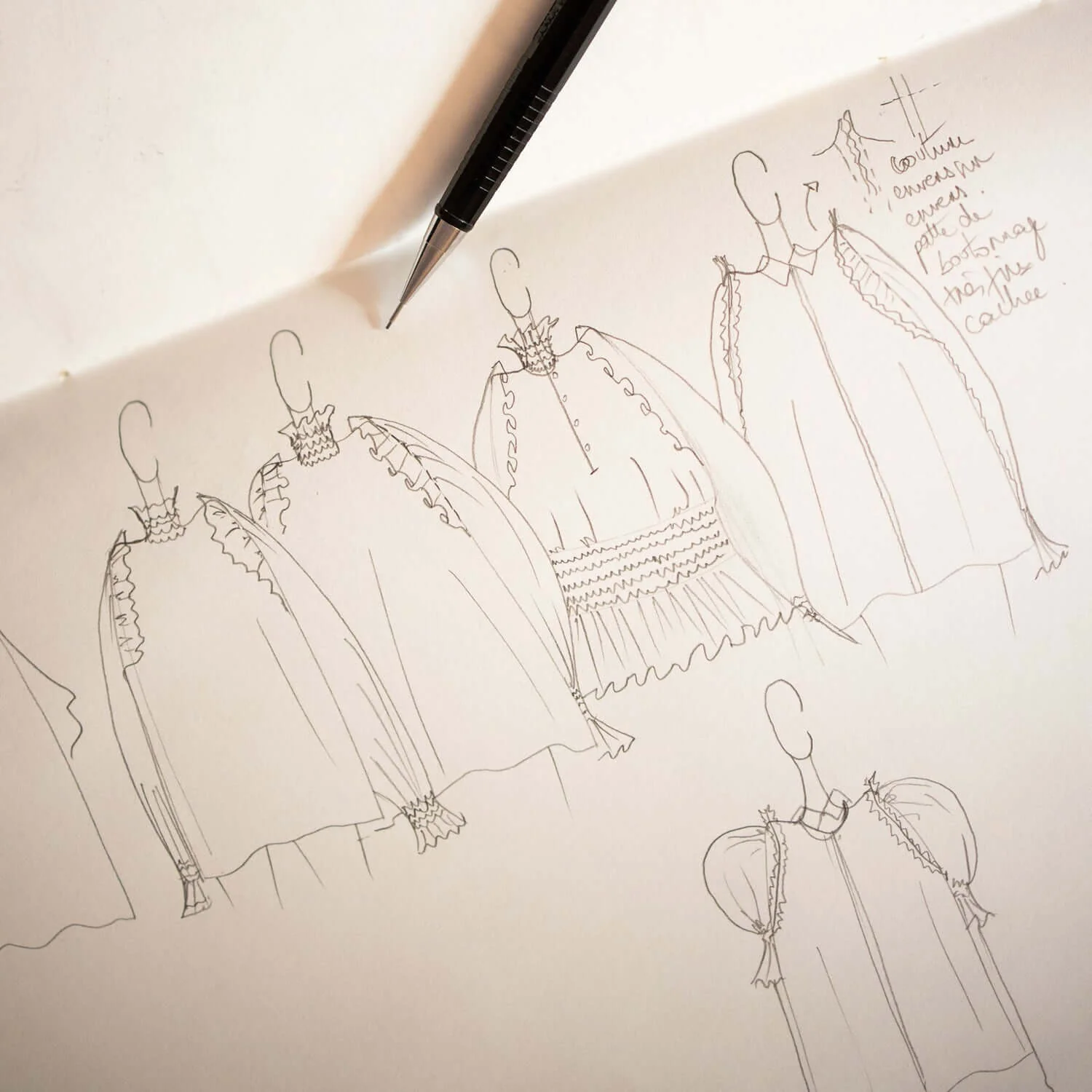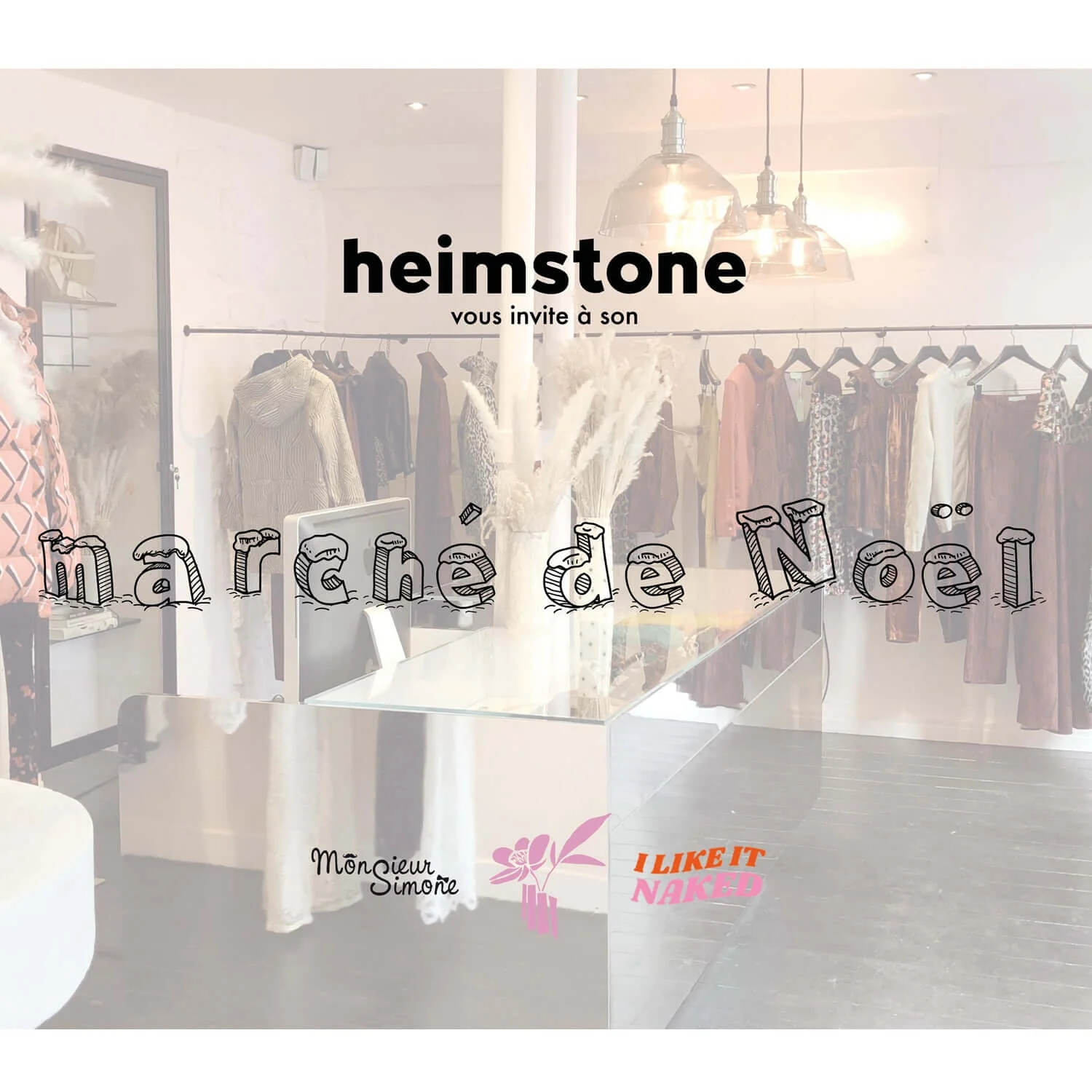#empowerwomenthroughcreativity
For this second article in our trilogy "Textile Industry, Sustainable Development and Heimstone", I would like to share with you an overview of the challenges we have been through (sometimes successfully!) over the past ten years. These founding steps have built us and also gradually pushed us to wonder today all together about the place we have in the textile industry. Beyond the development of our brand identity, our style, the respect for our brand values and necessarily all the economic constraints we have encountered, I would like to give you the opportunity to understand in full transparency the choices that built Heimstone as we know it today, within the context that I outlined in the first article.
In its introduction, I talked about Reformation, whose commitment is to be a 100% sustainable brand. This is not how Heimstone started when it was created 12 years ago.
Do you remember how it was 12 years ago? We had not yet fully realized the overuses and bad consequences of the consumption society. At Heimstone we were steering our ship through the turbulent waters and daily challenges of the fashion world, like everyone else. I will tell you our journey.
At the beginning: challenge everything and find our model
When I started Heimstone in 2007, we used 100% of natural materials: silk, linen, cotton and our manufacturing was 100% made in India. Back in the days, our ambition was the same as today: to create a brand of unique and high-end products, and in my mind, this is what silk embodied.

Honestly, our Indian supplier has never been a problem for me. But it became one for many of our customers. I think that each country has its own know-how and qualities, and I loved going there three or four times a year. I especially LOVED the boss of the factory over there, Anil. He was a man in his fifties who has always been kind enough to prioritize our production despite our small quantities and agreed to deliver complete productions even through hard financial times and God knows there were quite a few.
In short, I found that working with them made my work even more interesting, because as always when one is in a foreign country, one is generally much more tolerant, patient and ultimately respectful. After all India is such a different culture.
As for the Indians, they also needed clients like us: young Parisian designers with a strong growth potential. So all in all, nothing was impossible when working with them.
That said, it is true that very quickly we faced various problems: transportation costs and pretty high custom fees. Indeed (and unfortunately), many customers didn’t understand our prices because for them, "Indian manufacturing" meant "very low-cost manufacturing quality". But it was not the case, and brands like us generally add on 30% of markup on each piece produced because of the small size of our productions. I have always been shocked when some customers told me these kinds of things. For me it was a critical lack of common sense: yes, there are countries where unfortunately the workers are not respected by their employers who are not respected themselves by the Houses that employ them, but this cannot be an only truth. Again, Heimstone is not a brand with giant productions and is not run the same way as any company. We chose serenity and respect.

Some other customers thought that silk was "very beautiful but very inconvenient” because it requires a specific, gentle care. It is also a fragile material that wrinkles. In short, we had to change and find solutions to satisfy our customers.
In 2009 we kicked off our first project, giving priority to what seemed essential to our customers: the location of our production. Despite all the advantages India offered (creativity, embroidery), I no longer wanted the place of production of our collections to be so far from me, mainly for reasons of transportation costs and customs, and I was finally able to limit my travels. I will be completely transparent with you: at that time sustainability was not at the heart of our conversations yet, even if we already had in mind our own personal challenges at an individual scale. The awareness for our environment or the aftermaths of the fashion industry had not yet emerged so much.
We therefore went for a European manufacturing (our factories are mainly in Poland since 2010, but also in Île-de-France since 2012), allowing us to be closer to our factories, to work in the same time zone, but also to limit expensive and polluting transport (remember I was telling you about the work on reducing the numbers of traveled kilometers in the first article). We suddenly had the opportunity to have our clothes delivered by truck, it was just amazing for us. But we did lose the know-how of our Indian embroiderers, so we stopped integrating embroideries in Heimstone collections (until recently when we did our streetwear capsule, very recently as a one shot!). And then we found a supplier who was able to print on silk in Lyon. All of this meant incorporating a lot of changes, but it was always very rewarding to feel that the brand was evolving.
Despite our reduced transportation costs, manufacturing and raw materials prices on the contrary had enormously increased and it was impossible for us to produce dresses made of French silk and made in Europe at the same price as our Indian products. As a consequence, to remain priced as we were, we had to make a choice: reduce our margins and slightly increase our prices. At the beginning, the consequences were catastrophic for a small company like Heimstone.
In 2012, after being so close to bankruptcy (on that note, I suggest you read our article Heimstone: determination, creativity and cashflow), we had to think twice about our model and completely restructure our business (flowing between low margins and a distribution system that wasn’t working). We had to start with our sourcing of materials, the second largest project in Heimstone history.
Indeed, despite our efforts to maintain a high-end and singular product, some of our customers were still not happy with the constraints of silk that represented the major part of our collections. Not to mention the prices of this raw material that soared because it started to run out (I remember I designed all my prints from the Summer 2016 Bloom Collection on silk and three months later when placing the production order, the silk had increased by 8 euros/meter. Crazy! This production cost us a lot and did harm our small margins too).
We had no choice but to find a qualitative alternative that would be both economically acceptable and sustainable of course. Otherwise, Heimstone would probably have closed down.
Heimstone: its look and prints
With Heimstone, I care a lot on how a garment drapes, that is to say its appearance, the silhouette it creates and I think this is also what you like and what people come to buy here at Heimstone: a fluid but precise silhouette, a vaporous look. For that matter, the choice of our fabric is essential. Of course, there are more important concerns than how a fabric drapes! But if I was ok with not using silk anymore that gave this look to our silhouette, there was no way I would compromise that unique style, that drape that was the soul of Heimstone.

We had one more issue, and not a small one because it is one of our specificities: at Heimstone we develop all our prints, and unfortunately we can’t print on all materials: printing on a natural fabric is often much more blurred, the colors are less precise and will fade when washing.
Because I have been working in this industry for years, I knew there was not one perfect solution so we had to create our own. After meeting and talking with several suppliers of specialized fabrics, we discovered (and chose) the satin polyester on which we print a large part of our collections since 2016.
Just like many of us, I didn’t think well of polyester, which is often reduced to a synthetic low-quality fabric. I had to learn and educate myself on this subject. Let me show you another side of the satin polyester.
First of all, like everything and everyone in life, this material is not perfect, but it has many advantages.
Satin polyester is a very light, breathable material, and in my mind, it is a perfect imitation of the famous fluid drape of silk. It is also shiny, resulting from a specific weaving technique and that’s why we call it satin polyester.
It also has the advantage of being soft and extremely resistant: in short you will keep a garment made of satin polyester for a long time. And if you are tired of it? Give it away, exchange it, sell it: let it live many lives! Keep in mind that it is also up to us think twice about the end of life of our clothes once we do not want to wear them anymore. We all have the power to change the rules of the game.
Finally, it barely wrinkle, which is pure joy when you hate ironing like me (another opportunity to save energy by the way).
Then, the question of the ecological impact of polyester arises, and as we mentioned in the first article of this trilogy, there isn’t any perfect material. You have to choose your battle. One of my main battles at Heimstone today is to limit waste by controlling our production but also by creating sustainable clothes (versus mass market with clothes that we wear three times before throwing them away). At Heimstone, we know that a polyester piece has a strong thread and will last for years. That’s a first step towards sustainability. We also keep pieces made of silk, viscose, wool, and cotton in each of our collections. It is all about balance and mindful consumption.
On the supplier side, they know that they have to evolve too and be able to offer their clients some sustainable solutions. Recently, we found a 70% recycled polyester (Messy Dots or Three Seven prints were made out of this).

In a perfect world I would love to be able to continue to use only more respectful, natural fiber materials, but we have to face reality: silk and cotton for example have been through crisis for a few years now, and their ecological footprints are just as debatable as synthetic fibers.
While writing these few lines on the history of Heimstone, I realize that the richness of my adventure as an entrepreneur has naturally pushed me to make assertive choices, that are not necessarily perfect, but always respected my intention. When I plunge into my memory, I remember that each of these turning points have always been motivated by the same will: making the right choice. Choose the right suppliers, produce respectfully, sell respectfully.
Today, this motivation remains unchanged for the new challenges that Heimstone faces. All these stages that marked the course and history of Heimstone led us to become aware of certain things and make commitments that will be the subject of our third and final article of this trilogy. I will tell you about the choices that you do not see (yet!) but that can make a difference, which are decided before your visits in store, with my team, and which already leave a mark for a more sustainable Heimstone. I will take this opportunity to tell you what we want to set up for you and with you, as a customer, to help us reduce the environmental impact of our clothes. The future of Heimstone concerns all of us, so feel free to share your inspirations and ideas to feed our engagement for the coming year.
We never say it enough but there is no single truth, there are only the truths that we create. Share your point of view.
See you soon!








